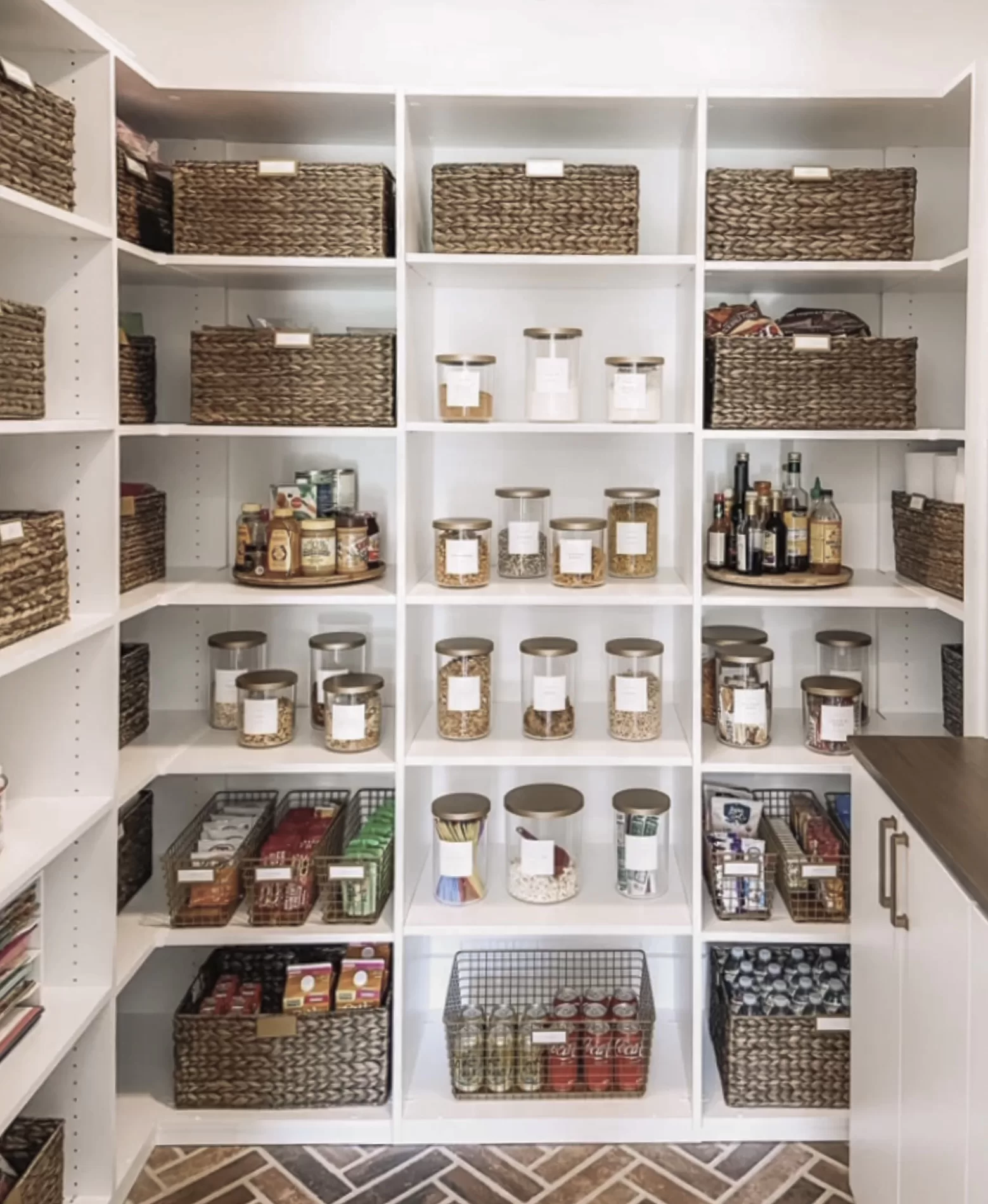The Art of Home Organization
Home organization is having a moment. From television shows to books to celebrity-status Instagram accounts - people cannot get enough of seeing a place for everything and everything in its place.
As a custom home builder, one of the things we often see is homeowners who bring their design dreams into the drawing room when their working with their architect or interior designer. But over the last year it has become an even more important element in many home designs, with many clients having custom cabinetry or entire systems planned for their new home.
No tour of home design would be complete without talking about home organization, and joining us on the podcast today are two excellent guests who have great stories and insights to share on everything from decluttering to designing pantries.
Jennifer Williams started Saint Louis Closet Co. when she was still in college and they are celebrating their 31st year in business in 2021. She has seen home organization trends and has insights into creating systems on how to make those organization goals last.
Lindsey Wolski recently completed her dream home with Hibbs Luxury Homes and her home organizing Instagram feed is a dream. She worked with our team and St Louis Closet Company to design the systems throughout her home that she has made sing.
EPISODE TOOL BOX

Season Four, Episode Seven | Transcript
From pantries and mudrooms to kids’ play spaces and dressing-room-style closets, this episode highlights how smart storage and thoughtful design can make any home more functional and, in turn, peaceful.
The Rise of Home Organization
The pandemic changed everything about how people live and work in their homes. Families suddenly needed to share spaces for school, work, cooking, and recreation and that shift sparked a surge in organization and storage design.
Jennifer shares that St. Louis Closet Company’s business quadrupled after 2020 as homeowners realized their spaces weren’t as functional as they thought. Meanwhile, Lindsay, who built her home with us during the pandemic, discovered a newfound passion for organizing as a way to reduce stress and create calm during uncertain times.
For both, organization became less about aesthetics and more about mental health, productivity, and family harmony.
Designing Homes for Calm and Function
Organization begins with design. Lindsay explains that she and her husband wanted to eliminate daily frustrations like hunting for shoes or school supplies by planning spaces with function in mind.
This approach led to creative ideas like:
- A built-in closet island that keeps folded clothing near dressing areas.
- Custom drawers under a reading bench to store books neatly out of sight.
- A mudroom drop zone for coats, shoes, and backpacks that keeps clutter from spreading.
Jennifer emphasizes that even small design choices like outward-swinging doors on closets or adjustable shelving can dramatically improve usability.
The Psychology of Order
Lindsay and Jennifer agree that being organized has mental and emotional benefits. Decluttering saves time, reduces stress, and promotes a sense of control. Studies suggest that an organized closet can save the average person up to 10 minutes per day, and over an hour each week.
Lindsay describes the satisfaction of watching her children find what they need on their own and start their mornings without chaos. For her, organization is about freedom, not perfection and building systems that simplify family life and foster independence.
Trends in Organization & Storage
Organization has evolved into a full-fledged design movement fueled by social media inspiration and reality TV shows like The Home Edit and Tidying Up with Marie Kondo.
Current trends include:
- Clear containers and color-coded bins for visibility.
- Hybrid storage solutions that mix open shelving with concealed baskets.
- Adjustable systems that adapt as families grow.
- Walk-in pantries and utility closets designed as functional showpieces.
While trends inspire, both experts caution that organization should always reflect what works for your household and not just what looks good online.
Custom Closets & Built-In Systems
Jennifer’s team focuses on creating the foundation of organization by designing and installing custom shelving, drawers, and hanging systems that can be adjusted as needs change.
Top tips for custom closets:
- Allow at least six feet of width for a dual walk-in closet with comfortable aisle space.
- Consider drawers, islands, or dressing areas to replace bedroom dressers.
- Use pocket or swing-out doors rather than bi-folds for better access.
- Plan early, ideally during the blueprint phase, to integrate storage into design.
Closets have become dressing rooms, craft areas, and even home offices. Homeowners now treat these spaces as design features, not afterthoughts.
Pantries, Mudrooms & Utility Spaces
Organization extends far beyond closets. Pantries, mudrooms, and utility rooms have become high-value spaces in new homes.
- Pantries are now larger, more functional, and often open to the kitchen. Builders are designing them as secondary work zones, complete with counters, cabinetry, and space for small appliances.
- Mudrooms serve as landing zones, keeping shoes, coats, and gear contained before they reach the main living areas.
- Utility closets house paper goods, cleaning supplies, and seasonal items keeping essentials accessible but hidden.
When these areas are planned early, they prevent clutter and make the entire home run more smoothly.
Creative Spaces: Kids, Lofts & Playrooms
Lindsay’s home features creative organizational touches for her children, including a loft play area with built-in drawers beneath a reading bench. Each drawer holds books and toys, making cleanup easy and keeping the room calm and functional.
Other clever uses of space include:
- Turning under-stair nooks into play areas with storage for toys or art supplies.
- Designing built-in shelves with doors to conceal clutter.
- Using multi-purpose lofts or craft rooms that double as quiet study zones.
Jennifer notes that craft and hobby spaces are becoming more popular helping keep creative energy contained and organized.
Decluttering & Sentimental Storage
The biggest challenge for most homeowners? Too much stuff. Jennifer encourages clients to start small by organizing one drawer or closet at a time.
She also recommends a simple decluttering habit: remove one item each day that no longer serves a purpose. Over time, those small steps make a visible difference.
When it’s hard to part with sentimental items, like baby clothes or holiday décor, she suggests repurposing coat closets or creating a dedicated memory storage space to keep those sentimental items organized but out of the way.
Donating items to local charities helps lighten the load while making a positive impact.
Common Mistakes in Home Organization
- Tackling too much at once. Start with small, achievable projects.
- Designing without understanding daily habits. Systems should fit how you live.
- Ignoring flexibility. Choose adjustable shelving or modular systems.
- Over-prioritizing aesthetics. Instagram-worthy containers don’t always work in real life.
Organization should feel sustainable, not staged. The goal is a home that looks good, functions well, and supports how your family lives.
From closets to pantries and creative nooks, organization is the foundation of a peaceful, efficient home. By designing spaces that reduce clutter and support everyday routines, homeowners can create calm in the midst of chaos.
Special Thanks to Our Sponsors...



